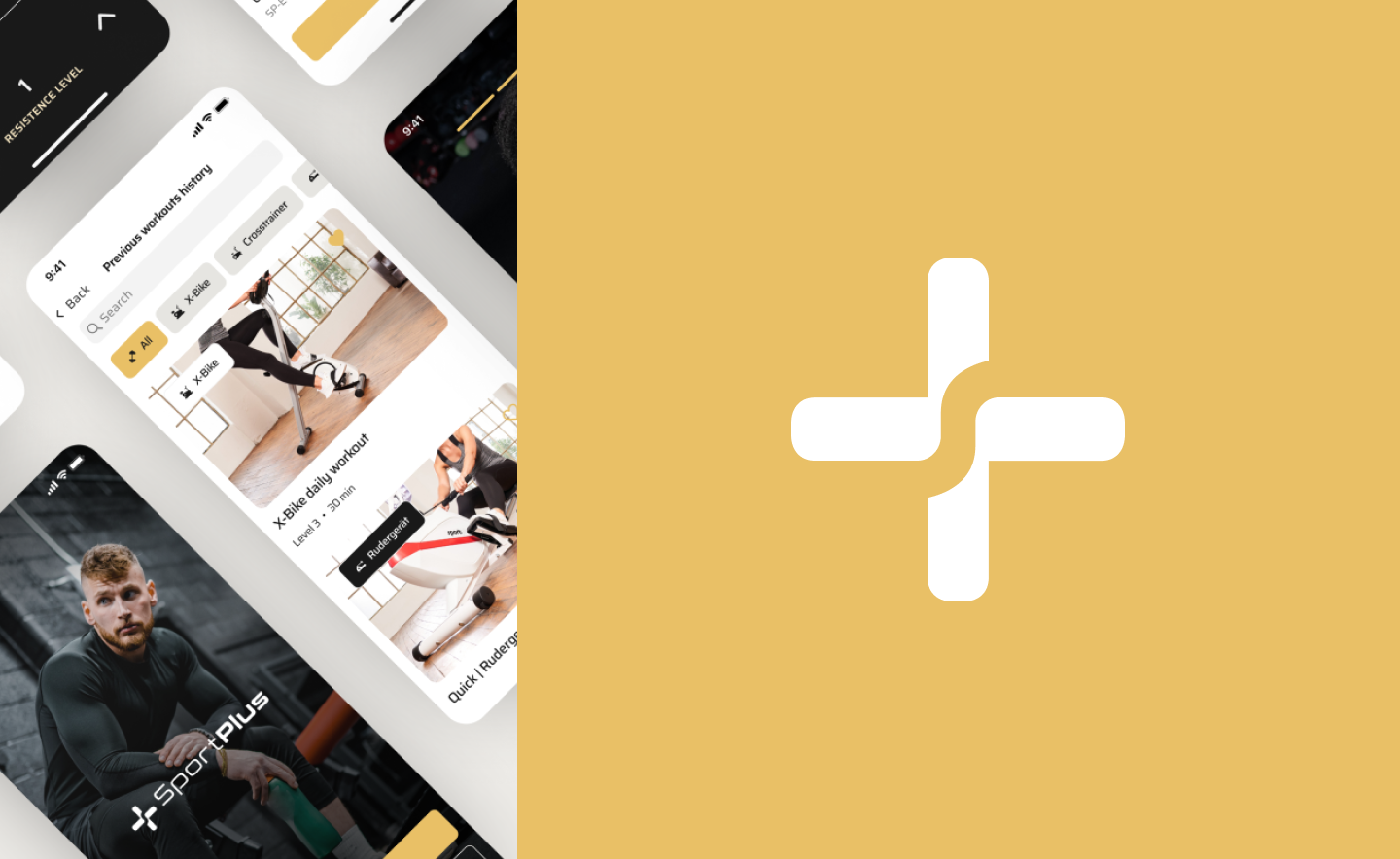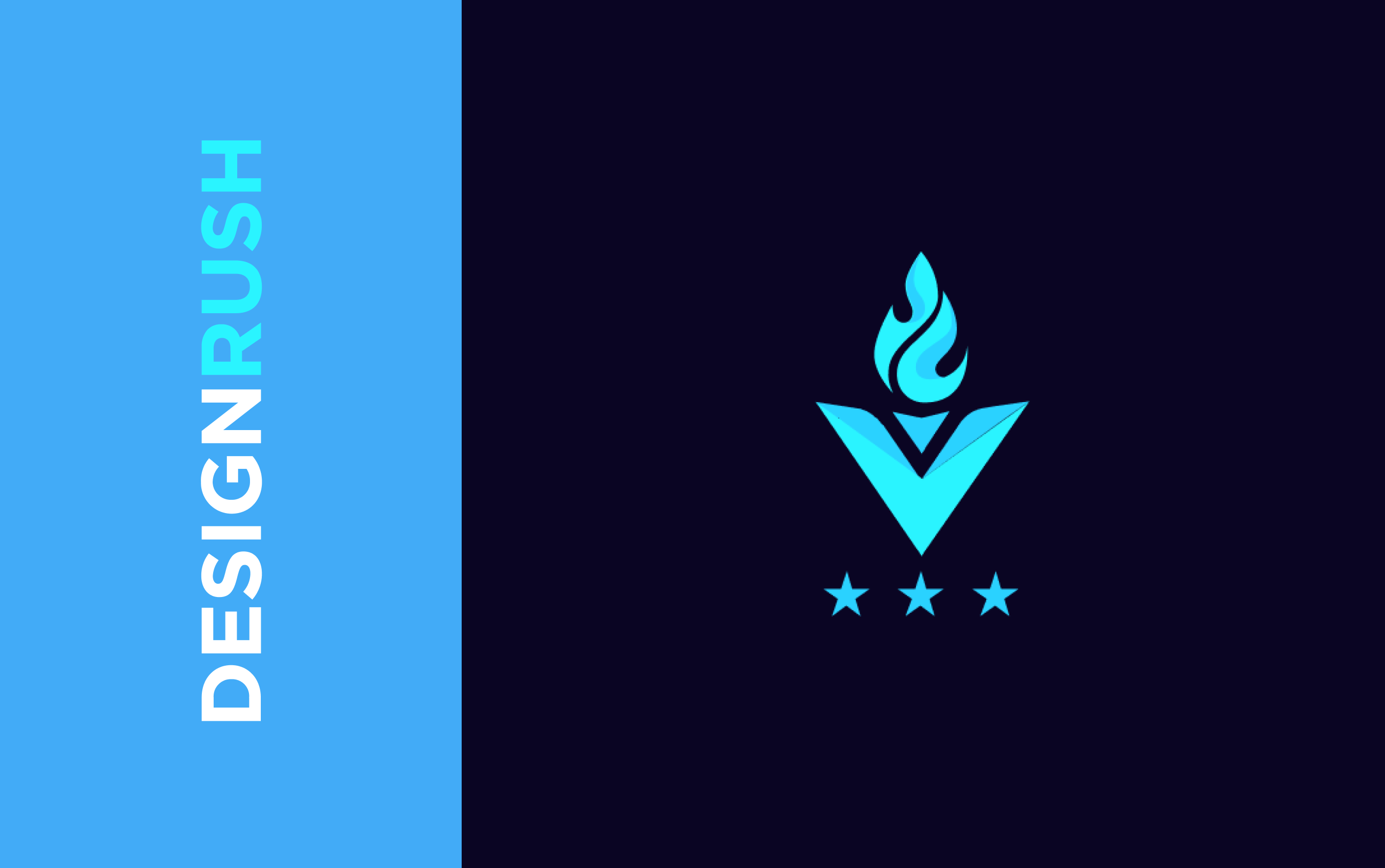Just imagine - you are launching your first business website, and it flops. Organic traffic declines, and existing customers leave faster than you can attract new ones. What happened? And how to fix everything?
There’s a chance you skipped UX research when making the website. But there is good news for you: you can invest in user research to make your product or services outstanding for your customers. Or you can do an audit or hire a UX consultant to help fix it. If you’d like to learn more about who a UX consultant is and how they can help your business, read our pprevious article on it.

Ways a UX Consultant Can Help Your Business Grow
Ignoring it is the most common mistake businesses make. For example, when Nielsen Norman Group tested two navigation schemes for an eCommerce website, they saw an 80% success rate with the navigation scheme structured according to user experience research about the customer’s mental models. And a 9% success rate with the navigation scheme structured according to the team’s internal thinking. It makes you wonder, doesn’t it?
If you want to engage your customers and attract new ones, you need to know your users and build your product centering around them. UX research is a perfect method to step in your customers’ shoes. With it, you can improve the overall user experience of your product, which will lead to a sales increase. For example, according to Infragistics, When United Airlines conducted user research to understand what would satisfy their buyers, they increased online ticketing by 200%.
Ready to learn about user research methods so that you will know it like the back of your hand? Then, let’s go!

What is UX Research, and Why is it Important
So, what is user research? According to Design Modo, UX research is; “The process of understanding user behaviors, needs, and attitudes using different observation and feedback collection methods.” It is about diving deep into comprehending how people behave when using your product or a website in real life and why. Sinéad Davis Cochrane, UX Manager at Workday, says: “UX research represents the insights gathered from users and customers that are leveraged to help make product decisions at any stage of the development process.”
There are four areas that user research questions to:
-
Physical environment
The environment in which the product will be used must be considered. For example, if you have a fitness startup and want to make an app, you need to consider the users’ state. Will users be using the app on the move? Or on the street during bad weather? Will users have sweaty hands? All of these can have a significant impact on product design.
-
Mental model
The mental model is how people think and how they perform specific actions. Therefore, it is vital to understand how users perform different activities to provide the most user-friendly design.
-
Habits
It is essential to ask the question of what habits the users have. If we return to the same example with a fitness app, then you can ask questions such as “What time do users prefer to exercise?”, “Is sports a new habit, or is it an ongoing process?” or “Do users like to workout with ready-made programs, or do they choose their exercises?”
-
Relationships
It is important to remember that people do not live in isolation. For example, they might use the product in a noisy place. It can also affect some aspects.

You know your business and your audience better than anyone else. But UX research gives your end users a fresh perspective - which is why such research is so valuable. Since they are not yet familiar with your processes and systems, user testers can best help you see where something might confuse a newbie just learning about your business.
User experience research aims to understand customers’ needs and provide the product team with perspectives to build the user-centered product. So, insights collected during this process are helpful to make great products and design or marketing decisions. With data collected through UX research, you will see all users’ pain points and thus give them a valuable solution.
Without UX research, you create a design and product on assumptions, and with research, you will have a data-driven approach that allows you to make a better product. UX research also works excellent on products in their early stages of development. So it is even more effective because it is easier and cheaper to fix errors at the development stage than to edit a finished product. Read our article on the design process to learn more about building a product from scratch and what role the design process plays in this.

How Do the Perfect Design Process Steps Look? Everything You Need to Know
But these are not only advantages of it. Let’s take a closer look at user research benefits.
Benefits of UX Research
Now we know what UX design research is, so it’s time to learn about the benefits of this process. Next, we will explore the advantages of investing in UX research throughout the product and development process. You can also apply it for existing products, so let’s dive into this!
-
Informed decisions based on data
UX research prevents you from building wrong things or the right ones but in the wrong way. You will understand your users’ behavior and thus make informed decisions with it.
-
No more bias in the UX design process
The bias happens “when you have an interpretation, and you adopt it, and then, top-down, you force everything to fit that interpretation,” says psychologist Daniel Kahneman.
An excellent way to remove biases from the UX design process is to ask the right questions. And UX research can help you in it. Moreover, this research can help you find the correct answers that would help you be more empathetic to the user.
-
Test and validate concepts
UX research gives the ability to test your concept early, so you don’t need to wait till it launches to gather feedback. It is an excellent opportunity to fix all issues before development.
-
Valuable solutions
UX design research helps to reduce the risk of lousy usability so that the product will be valuable, and the customers will know how to unlock that value. In addition, it explains what solution is more suitable for each type of customer. So you won’t be mistaken.
-
Check your user personas
Studying and testing customers make it easier to create accurate user personas. It is vital for creating a successful product. But, you need to understand that personas may become outdated over time. So, you need to update them regularly. The UX research process is an excellent tool to keep your data about user personas relevant.
-
Successfully take the product to the market
The data gathered with UX research helps product marketers understand the audience to communicate the product’s value to the customers effectively.
-
Fewer spendings
Forrester estimates that for every $1 to fix a problem during design, it would cost $5 to fix the same problem during development and $30 to fix the same problem after the product’s release. UX research gives you a clear understanding of your product to avoid spending money on unnecessary things.
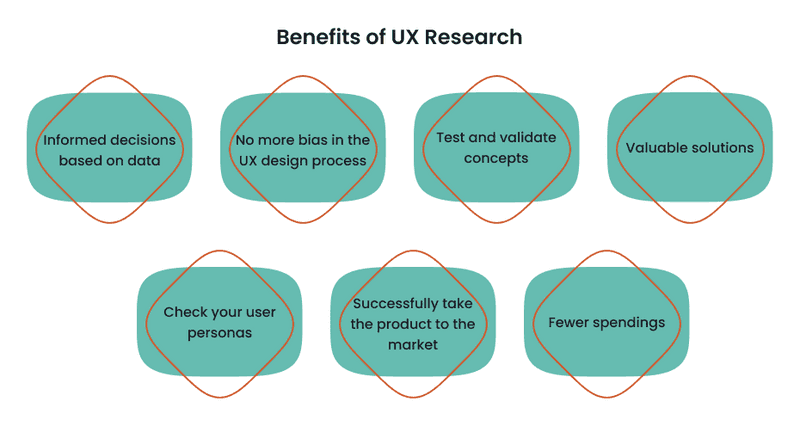
UX research is just as great a method for analyzing your product and audience as a UX audit. These processes provide many benefits for your business and product. If you are interested in learning what a UX audit is and how it will increase the conversion rate of your business, please read our previous article about it.

How to boost performance with UX audit (and who can do this for you)
In a nutshell, user research gives you a clear understanding of your customers to create relevant products and services, build proper business strategies, and make significant decisions. But what’s next?
Types of User Research
UX researchers use different methods to understand who users are, what they need, and how they behave. The type of UX research can also depends on the problem that needs to be solved, data required, budget, and project timeline. There are a few types of user research:
-
Quantitative
Quantitative UX research usually requires a lot of representative case studies and data to work with, and they are mathematical and structured in their approach. Quantitative analysis uses measurement tools such as surveys or analytics to collect users’ product use. In this type of research, the UX researcher summarizes the sample results for the population.
-
Qualitative
Qualitative user experience researcher collects data from the users directly. They often use focus groups or field studies for it. This approach typically uses a small variety of cases, and the data collection process is less structured. Qualitative methods are best for figuring out the “how” or “why” of user behavior.
-
Generative
This type of UX research is excellent for the discovery phase for checking and improving new ideas. It helps to understand users’ pain points, behavior, and motivation and also helps to find out how the design can solve all of these issues.
-
Evaluative
This type of research can help evaluate a product or a concept and gather data to improve it. It includes such activities as accessibility testing, content testing, etc. Evaluative user research can also analyze competitors and define what solutions work well on the market, so you will be one step ahead when building your product.
Mithila Fox, the Senior UX Researcher at Stack Overflow, says: “Evaluation research can start as soon as you understand your user’s needs. Before you have your mockups, you can begin by testing competitors or similar products. There is a lot we can learn from what is and isn’t working about other products in the market.”
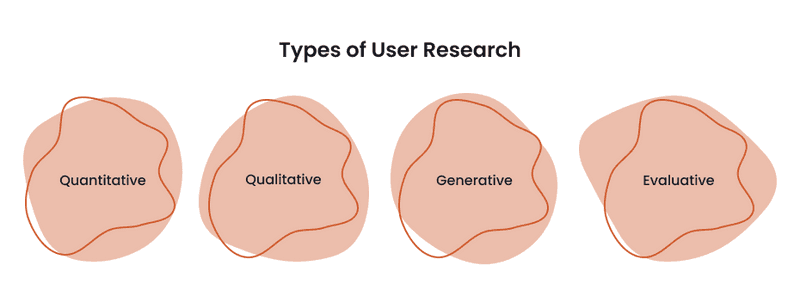
After we learned about types of UX research, it is time to find out who is UX researcher is, right?
What is a UX Researcher?
The main task of a UX researcher is to humanize every part of the product. They think about users’ needs and how to translate them into a project. It is a specialist who is concentrated on users’ needs and goals.
UX researchers’ job consists of collaboration with designers and stakeholders to understand the product, define research questions, select the suitable method for collecting data, and then develop a timeline for the research. The next step in a UX researcher’s work is to conduct research, analyze the data, and transform it into understandable insights to present to the stakeholders and designers.
So, the UX researcher is exactly a specialist who analyses your product to improve it for the users. But what UX research methods can be used to reach this goal? And how to choose the right one? Let’s go further!
UX Research Methods and How to Choose the Right One
These are the ways of generating insights about the users, their needs, pain points, and behavior. It is possible to use several user research methodologies to improve the project’s user experience.
First of all, it is essential to know what exact data you need to gather and what problem you want to solve. With this understanding, you will know what questions and answers you need. The type and methods of UX research also depend on the project timeline. Nannearl LeKesia Brown, the Product Researcher at Figma, advises: “Make sure you understand where you are in the UX design process. Once you clarify that, having a good idea of the different methods you can use and when they’re best applied throughout the design process will help you identify what might yield the most helpful results within the constraints under which you’re working.”

Yet, it is crucial to understand actual user experience data and what the team or stakeholder already knows. You will discover what is not found yet and what can be improved with it. So, when selecting the UX research method, it is essential to understand your goals, resources, and project timeline. And what are the methods?
UX research is all about problem-solving. So to find the perfect UX research method, you need to understand what answers you want to get from it. At the same time, it is essential to consider the project timeline and resources.
UX Research Methodology
UX research is all about problem-solving. So to find the perfect UX research method, you need to understand what answers you want to get from it. At the same time, it is essential to consider the UX research project timeline and resources.
Audience Research
UX researchers study the audience and business to understand users’ needs and pain points and determine how to implement improvements.
-
User and expert interviews
It is a well-known way to gather information. During the user research interview, you ask participants questions and analyze the answers. The trap of this method lies in the questions. UX researcher needs to ask the right ones. For example, it is vital to ask fewer questions that lead to Yes/No responses because these won’t give you much insight. Yet, it is crucial to ask the “Why?” questions to uncover users’ needs and why they don’t use a particular feature or product.
Yet, in this UX research methodology, researchers conduct interviews with experts to understand how the business or product works.
-
Focus groups
It is a qualitative research method that includes studying a group of people to uncover their beliefs and opinions about the product or particular feature. In such a method, it is essential to ask specific user research questions that are clear and focused on the main topic. This method is a bit like a user interview, except that an interview is conducted with a group of people at once.
-
UX research surveys
It is an excellent tool to gather meaningful insights from a group of users. User research survey can include both open-ended and closed-ended user research questions. Therefore, it is essential to plan and formulate your questions to get accurate insights correctly.
-
Customer feedback
It is a piece of open-ended or closed-ended information and thoughts about the product from a group of users.
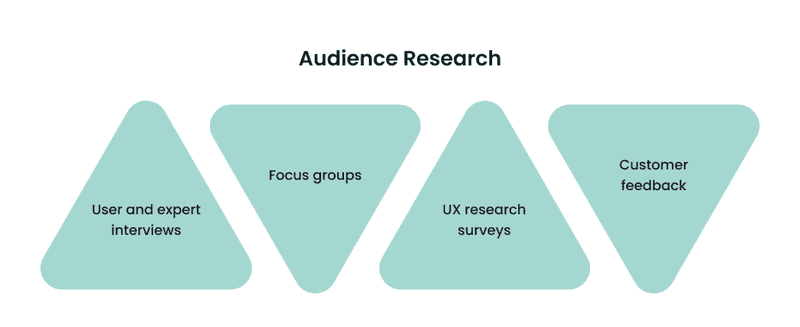
Observation and Ethnography
It is essential to find out the user environment where the product can be used. It has a significant impact on the product’s features and performance. So what’s are the methods to uncover this data?
-
Field studies
It is a research activity in the user environment, so it is perfect for uncovering the context, unknown motivation, and other things that may affect the user experience. The main advantage of this UX research method is that users are observed in their natural environment to see which context they complete tasks in. With this knowledge, it will be possible to create the most suitable solution.
-
Diary/Camera studies
In this UX research method, users are asked to take notes and photos of what they like or dislike about the product. And also about what put them into a stupor when using it. It should be like a diary that tells the story of how the product merges into the user’s daily life and how the user interacts with it in their everyday life.
-
Eyetracking
A dedicated eye-tracking device is configured to accurately measure where users are looking while performing tasks or naturally interacting with websites, apps, physical products, or environments.
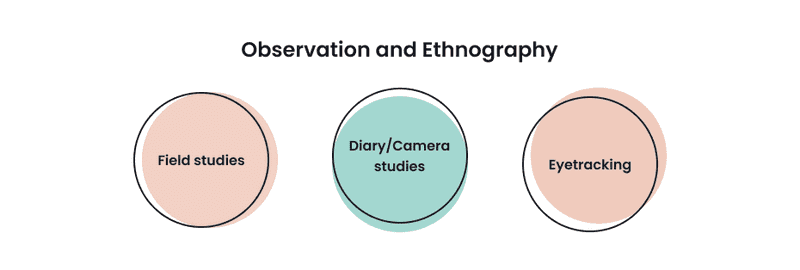
Desk Research
It is best to learn from the mistakes of others. At this point, researchers immerse themselves in the business environment to better understand its logic and analyze competitors to understand what can be done better to make the product stand out in the market.
-
Domain research
It is about diving into the environment and business. First, UX researchers must understand the business niche and how the products exist and work. Also, with the help of domain research, specialists can understand how users of this niche behave and study the main business process and logic, which is also crucial for implementing the necessary improvements.
-
Competitors research
Comparison with competitors is an integral part of UX research. With this method, you can determine which tricks work best and what unique things can be included in the product to make it stand out.
Structure Research
These methods are needed both for a project at the initial design stage and for already existing products that, for some reason, do not give the expected results. With the help of such methodologies, it is possible to find out which product structure will be the most profitable and successful for the business’s target audience.
-
Card sorting
Card Sorting is one of the UX research techniques in which users arrange thematic cards into categories in a way that makes sense to them. This research activity helps create intuitive information architecture and user experience. Vaida Pakulyte, UX Researcher at Electrolux, says: “ Card sorting is a great exercise for understanding the mental models of our users, and it’s a great way to question biases in the team by validating it with real users.” Yet, card sorting is helpful when needed to define and test a new website architecture.
-
Tree testing
‘This UX research method can help you test how the navigation performs with users. There, UX researchers give the test version of the website to the participants and ask them to locate items on a website or an app. With this testing, you’ll have an understanding of the correct hierarchy.

Product Testing
When a structure has been tested or defined, its effectiveness must be verified. The following methods are suitable for this:
-
Concept testing
A UX researcher shows an example or reference of a product or service that reflects the essence (value proposition) of a new concept or product to determine whether it meets the needs and goals of the target audience; this is done one-on-one or with a large number of participants.
-
Five-second testing
You might ask why exactly 5 seconds and the answer is that according to data, 55% of visitors spend less than 15 seconds on a website. So, people make impressions on the visuals within a few seconds. So, participants are given five seconds to view the image of website design or else, and then, they say what they think and what impressions they have.
-
A/B testing
It is a method of UX design research in which the design is tested on other randomly selected groups of users. During this testing, we observe which design the users interact with better.
-
Usability testing
In this UX research method, the product is presented to a group of users for testing. They perform some tasks in it and evaluate it. Then, through iteration, you can identify weaknesses in the product and improve them. This method aims to understand how functional the UX design and research is a perfect method for that. To make design decisions more informed, it is crucial to make usability testing often, so it is possible to fix issues early. It is suitable even for testing UX wireframes.

We learned about UX research and the methodologies that are used. Now is the time to learn about the process itself. Where does any process begin? First, of course, withdrawing up an action plan. Let’s find out more about this.
UX Research Plan Template
In a nutshell, a UX research plan is an overview of the UX research strategy that helps run a project. This document should be shared with stakeholders and the product team, so everyone will know what to expect. So, what steps need to be taken to conduct UX research?
-
Define the problem
First of all, it is crucial to define the problem to solve. To do it, UX researchers can conduct stakeholders interviews, team sessions and make UX analysis of the current data.
-
Identify your objectives
Then, it is needed to understand objectives. Then, finally, what needs to be done, why, who the users are and what they need, and what expectations from the UX research process. Sinéad Davis Cochrane, UX Manager at Workday, says: “The objectives drive all of the questions that you’re going to ask your users or customers in the interview process.” So it is crucial to identify them correctly.
-
Choose the proper UX research method
A UX research method depends on the project timeline, design stage, goals, and resources. For example, if a project is only in its early design stages, a generative research method such as user interviews can help you gain new insights into your target audience. Or, if it is needed to evaluate how a new design works with users before submitting it to developers, it is a great idea to run usability tests to get practical design ideas.
-
Recruit participants
To understand who will be a participant in UX research, you need to turn again to the goals and questions, the answers to which are required. You also need to understand whether there is a user base to conduct tests and interviews with or it is necessary to collect a separate group of people.
When recruiting test participants, you need to consider the user persona and the target audience. This step in the plan should also contain the number of required participants.
-
Prepare the brief
The test questions should be prepared beforehand so the meeting will be on track.
-
Establish the timeline
Estimating how long the UX research will take is essential for any job.
-
Define how you’ll present your findings
You need to think about presenting the received data to understand it for everyone. It can be a presentation or a document with spreadsheets. It is also essential to convey information in an accessible way. The ability to present results is not an option but a necessary skill for UX researchers.
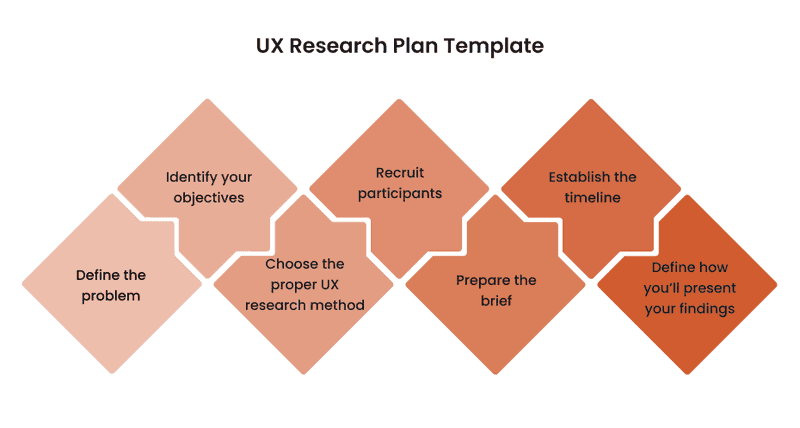
It was just a UX research plan example, and different UX researchers may change it depending on how they work. You may say that creating a user research plan template is unnecessary, but it has benefits. So let’s take a closer look.
Benefits of UX Research Plan
If you have a plan, half of the work is already done. Understanding how the user research project should run will make the workflow smoother. Let’s take a look at the benefits:
-
Achieve your UX goals
Having a solid UX research plan is helpful to stay focused and track the progress.
-
Engage stakeholders
A written user research plan is an excellent way to engage stakeholders to be active participants rather than passive observers.
-
Align expectations
UX research plan ensures that everyone knows the project timeline, objectives, and expectations.
Now we know everything about the UX research process, and it is time to find out how to present the results of that work.

A UX Framework to Speed Up Your Processes
What is a research framework? Essentially, it is a kind of map for the process. It helps break the UX research project into small steps, so the workflow goes more smoothly. In Axicube, we use some UX frameworks that speed up our processes:
-
Jobs-to-be-Done (JTBD)
The Jobs-to-Be-Done framework represents user needs, elucidated through qualitative user research such as interviews and usability testing. It includes defining what the customers are using the product for.
With this understanding, the product team can think about users’ core problems and needs from a new perspective and develop product features that best address this core need.
-
Value proposition canvas (VPC)
A value proposition canvas is a tool that can help ensure that a product or service is in line with what the customer values and needs. The value proposition canvas can be used when there is a need to refine an existing product or service proposal or when a new bid is being developed from scratch.
-
Customer journey map (CJM)
What the customer feels, sees, and hears when interacting with the product creates the basis for their experience. Understanding this experience allows you to map and control the customer journey accurately. Mapping the customer journey includes the following: actions, motivation, questions, pain points.
-
User stories mapping
It is a UX mapping technique often used by Agile teams that uses sticky notes and sketches to indicate the interactions expected from users to achieve their goals in a digital product.
-
User journey
This scheme is most applicable when consumers contemplate a choice for an extended time. The key to this concept is to identify the different stages of the path to decision making and to establish connections between these stages.
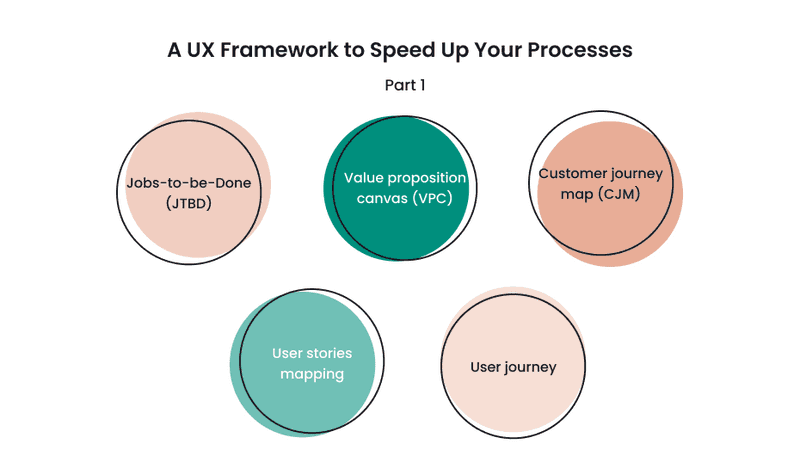
-
User scenario
User scenarios are stories that designers create to show how users can act to achieve a goal in a product. Designers think through scenarios to understand the motivations, needs, barriers, and more users in using the product.
-
User flow
User Flow is a script that illustrates actions to solve a problem. To test the scenarios, it is enough to conduct an online survey. You need to give respondents a link to the product and task. At the end of the passage, questions are asked from the standard usability questionnaire (SUS). It is helpful to test direct and indirect competitors on a par with the product. The difference in estimates contains the most beneficial.
-
Google sprint
This method starts from problem definition and continues with six problem-solving techniques to resolve the challenge: understanding business goals, exploring possible solutions, reviewing ideas, testing them, and validating. Google sprint can be used anytime during the product timeline.
-
Design thinking
The structure of design thinking follows a general pattern: 1) understand, 2) explore, and 3) materialize. These more significant segments include six stages: Empathy, Definition, Idea, Prototype, Testing, and Implementation. All steps can be repeated until the desired result is achieved.
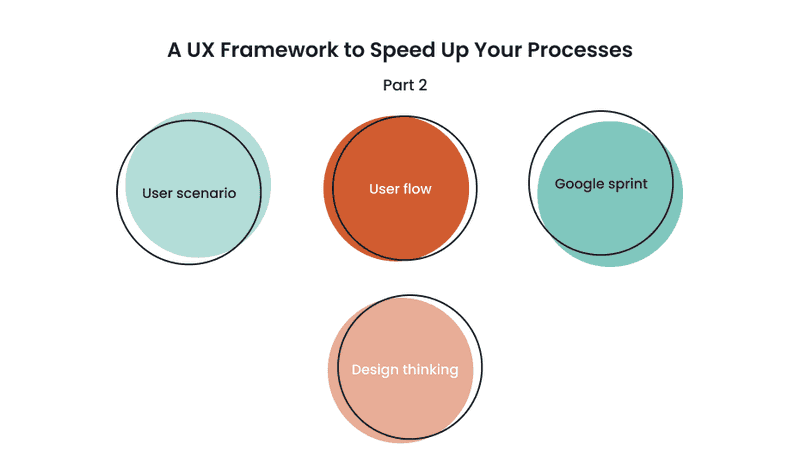
We have an excellent UX research example in our practice. You can read our case study, where we conducted UX research using some of the frameworks we talked about above.

How to Improve Employee Onboarding with Yangol.io | Case Study
After we have learned all about the UX research process, it is crucial to find out exactly how to formalize the results of this process.
How to Make UX Research Reports
Reports and presentations are the most common ways to share information with stakeholders. So yes, there is something similar between school project presentations and UX research reports presentations. But the second ones are deeper.
The primary purpose of it is to communicate findings to stakeholders. However, it is also essential to ensure that they get the data’s significance. If you deal with small groups of technical stakeholders geographically in different parts of the world, reports are a practical choice.
If there is an opportunity to speak to a group of stakeholders, then a presentation is better suited. So, at least people in the same room will hear you, and the information will reach them.
Choose how to present research results in a preferable way for stakeholders. The main thing is that the UX research reports should convey information well.
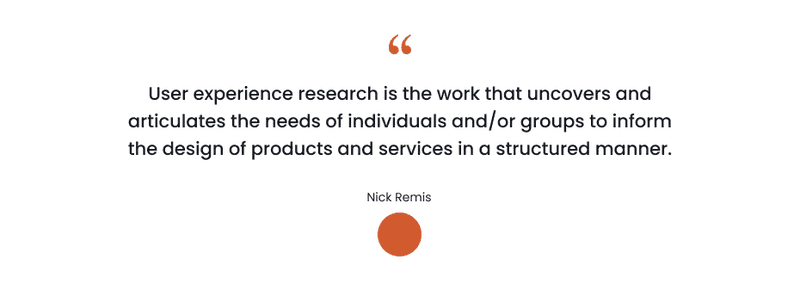
Conclusion
“User experience research is the work that uncovers and articulates the needs of individuals and/or groups to inform the design of products and services in a structured manner.” — Nick Remis, Adaptive Path.
As you understand it, UX research is something that a business shouldn’t skimp on. You may think that you know your users perfectly, but with the help of research, you can dig even more profound. It is an in-depth study of users’ needs and pain points. With this, you can improve your product based on user feedback.
At Axicube, we use some user research methodologies when working with projects. First, it helps to fully immerse yourself in the inner aspects of the business and make a product that will be ideal for the target audience. In addition, our team has extensive experience working with startups and businesses of various sizes, so we have perfectly honed our UX research skills. You can check this by contacting us about your project.

